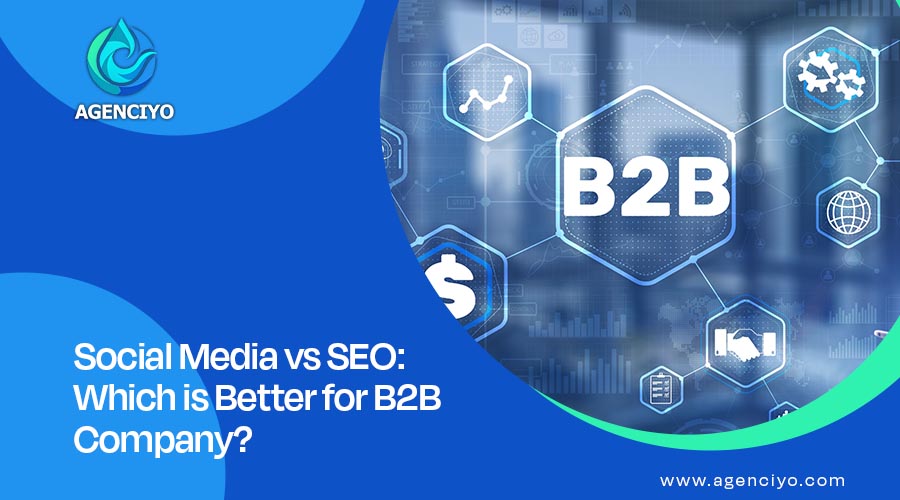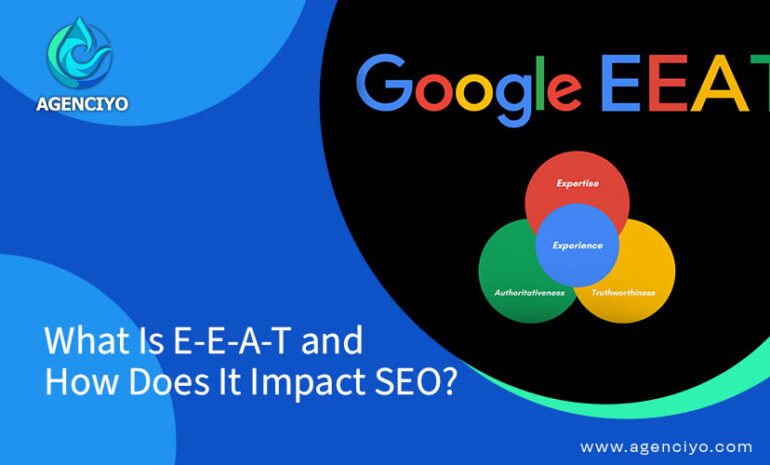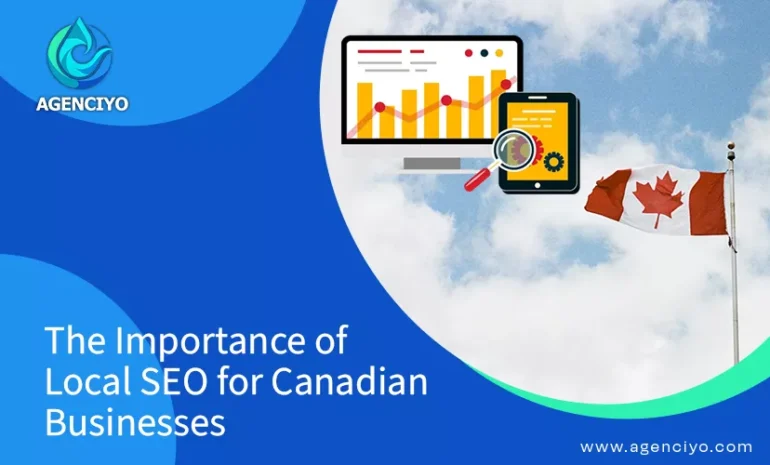When marketing a business, especially a B2B (Business-to-Business) company. Two major strategies stand out: social media and Search Engine Optimization (SEO). But which one is better? Instead of seeing them as competitors, the best approach is understanding how they complement each other. Let’s break it down so you can decide how to use both effectively. With Agenciyo lets see Social media and seo and best platforms for B2B marketing.
Comprehending Social Media and SEO
Both approaches are strong and weak in certain areas. So let’s examine how they operate in various sectors. Search engine optimization and social media marketing both are important. Before comparing the two, let’s define both:
Social media and SEO involves websites like LinkedIn, Twitter, Facebook, and Instagram. Where companies can communicate with prospective consumers, post material, and engage in relationships.
SEO (Search Engine Optimization)
This tactic assists a business website in ranking higher on search engines. Such as Google which makes it simpler for individuals to locate it. When they are searching for similar topics.
B2B digital marketing Strategies: Where Do They Diverge?
For a B2B business, the intelligent strategy is to produce long-content. That is SEO optimized and then slice it up into bite-sized, manageable chunks for social media. This way, you get the best B2B digital marketing Strategies. Social media and SEO rely on good content but use it differently.
SEO Content: Focuses on creating in-depth, informative content. That answers common questions potential customers may have. Blog posts, guides, and FAQs are great examples of SEO-friendly content.
Social Media Content: Affects more about brief, concise, and attention-grabbing content. Images, posts, stories, and videos draw interest and stimulate dialogue.
Reaching the Right Audience
For B2B marketing, LinkedIn is an excellent platform. Since it reaches professionals who make business decisions. Meanwhile, SEO ensures that your website attracts potential clients who need your services. Who sees your content depends on the platform you use.
SEO: Helps businesses reach people who are actively searching for solutions. Businesses that provide software development services will likely turn to Google, not Instagram.
Social media: Assist companies in presenting their solutions. To individuals who are not necessarily looking but are interested in the subject.
Visual Interest and Engagement
For maximum impact, a business can design an infographic for social media. And then distribute it as part of an in-depth blog posting for SEO. That way, social media gets an immediate draw, while the blog post is available as a long-term resource.
Social media: Functions best with images and videos. A good infographic or a short video about your product can draw a lot of views and shares.
SEO Content: It is text-based but can make use of images and videos. To generate user experience and maintain visitor engagement.
Speed and Longevity
For a B2B business, it is optimal to have both. Employing social media as a means for short updates. With investing in social media and SEO provides long-term visibility.
Social Media: gives instant results. If you upload something today, you may receive likes, shares, and comments within hours. But the effect diminishes with time unless you continue to upload new material.
SEO: It takes time to show results, but it has long-term benefits. A well-optimized blog post can bring visitors to your site for years.
Lead Generation and Sales Conversion
Businesses want conversion. Turning website visitors into paying customers. A great strategy is to use SEO to attract visitors and social media to keep them engaged with your brand.
SEO brings in high-quality leads. Because people searching for specific services are already interested in what you offer.
Social Media creates awareness and engagement but doesn’t always lead to immediate sales. However, it’s useful for nurturing leads and staying top-of-mind.
Cost and Effort
For B2B companies with limited resources, focusing on SEO for long-term benefits. While using social media selectively can be a smart approach.
SEO requires ongoing effort to produce high-quality content. Optimize it for search engines, and build backlinks. However, once a page ranks well. It can continue bringing in traffic without additional cost. Social Media needs constant posting and interaction. Paid advertising will assist, but it costs money.
Measuring Success
B2B digital marketing strategies can be measured by seeing which social posts send traffic. To SEO-optimized pages. Monitoring results is crucial for both tactics.
SEO Metrics: Website traffic, search rankings, and conversion rates can be used to measure SEO success.
Social Media Metrics: Likes, shares, comments, and engagement rates are important. These indicate how successful the social content is.
The Perfect Combination
Instead of picking one or the other, the optimal plan is to leverage both:
- Employ SEO to bring high-intent traffic.
- Employ social media to build engagement and brand presence.
- Link social media updates to SEO content to drive traffic.
- Get visitors to your website to follow your social media for updates.
- Track performance and refine your plan.
Conclusion: Which One is Better?
There isn’t a single-size-fits-all solution. SEO is vital for long-term success for B2B businesses. While social media assists in building a brand and engaging. Both are best used together by the most successful companies to gain maximum results.
Social media is ideal for receiving instant attention and engaging with customers. SEO is important if you desire a consistent stream of prospective. Clients discovering your business in the long run. The optimal solution? Implement them both together for an overall marketing strategy! Agenciyo is here to provide you optimal social media marketing service. To grow your business on larger scale contact now!


